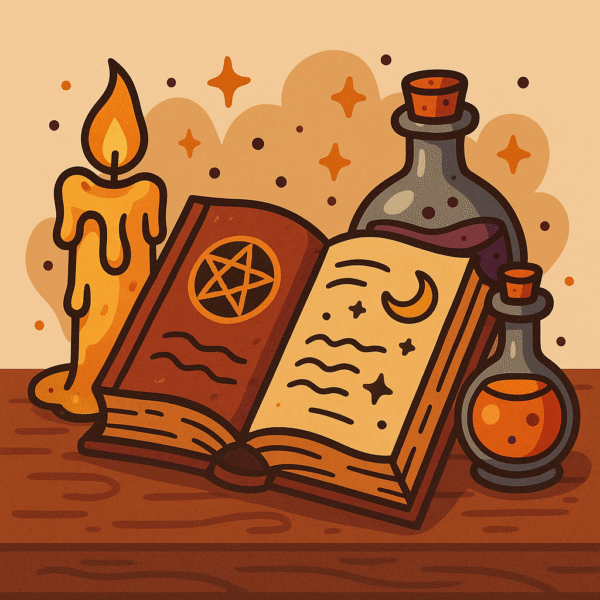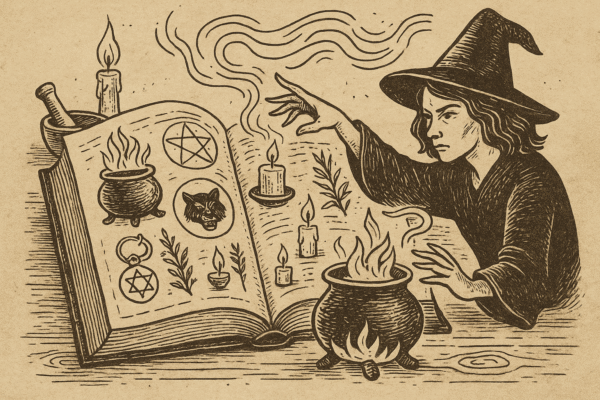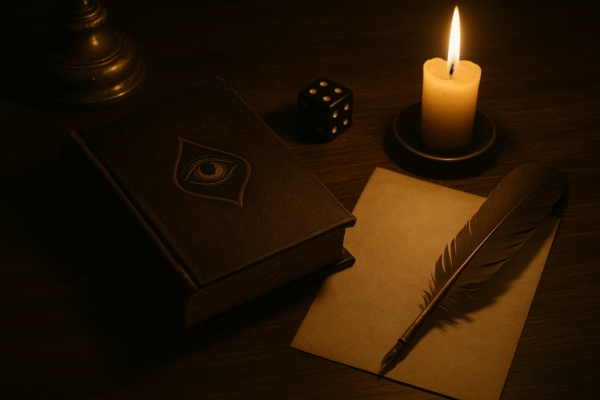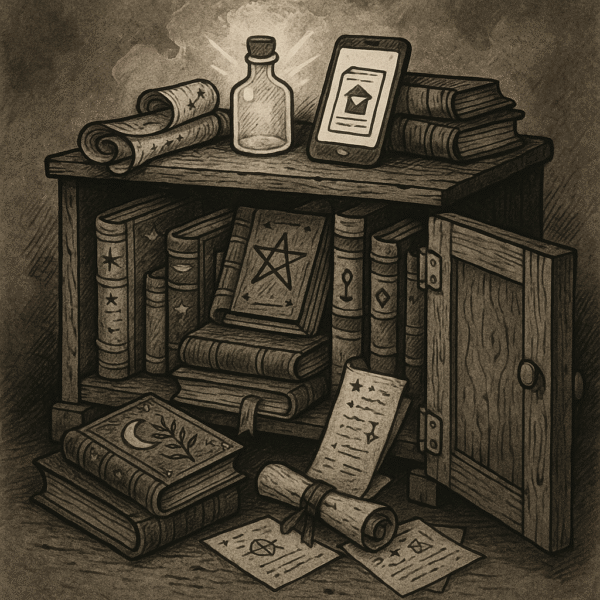A Guide to Creating In-World Texts, Journals, and Lorebooks That Feel Realer Than Reality
Filed under: Worldbuilding, Grimoires, Dangerous Footnotes
“A book needn’t exist to leave a mark. Some were never published. Others were never printed. A few were never meant to be written, but they were. And some… are still being written by hands long gone.”
— Dr. Anton Sable, On False Tomes and Feral Narratives
Whether you’re crafting a fantasy campaign, writing a novel, or simply building a world you haven’t finished dreaming yet, in-world books are one of the richest tools you can wield.
They hint at history. They frame your magic. They lie, sometimes. And when done well, they feel more alive than your main plot.
This is a guide to creating fictional books that feel textured, tangible, and dangerous to leave lying around.
✍️ Step One: Name the Book Like It’s Whispered
Your title sets tone, mystery, and scope. Don’t reach for the obvious. Use contradiction, implication, or ecclesiastical gravity. Ask yourself:
- Is it a field guide? (“Warding Weeds and Hedges of Harm”)
- A prophetic codex? (“The Sealed Index of Incomplete Days”)
- A memoir of someone who shouldn’t remember what they do? (“I Dreamed the Map and Woke in the Sea”)
🗝️ Pro Tip: Use SkillScout for name generation and creative scaffolds if you’re feeling stuck.
🧾 Step Two: Define the Author (or Invent the Debate)
A good fictional book often comes with an even better fictional author — or better yet, multiple factions arguing over its authorship. A few possibilities:
- A banned scholar whose name has been erased
- A field scribe who compiled the book, but swears someone else wrote the last page
- A priest who wrote it as penance — or as bait
Include marginalia. Include contradictions. Let your in-world characters disagree about the book’s accuracy. That tension is worldbuilding.
🕮 Step Three: Craft the Table of Contents
This is where your illusion becomes real. A strong fictional Table of Contents can make the idea of the book feel fully formed — even if you never write the pages themselves.
Here’s a sample from the (possibly cursed) Treatise on Conspiratorial Cartography:
- Maps the Empire Forbade
- Of Waking Geography
- How to Chart a Lie
- The False North and the Bleeding Meridian
- Pages Removed at Sea
🕯️ Step Four: Let the Book Affect the World
The most memorable in-world texts are consequential.
- A character loses their memory after reading it
- Possessing it grants status — or paints a target
- It spreads a rumor or ideology that reshapes factions
- No one agrees what it actually says, and that division drives conflict
Don’t just make the book lore-rich. Make it lore-active.
🗝️ Bonus: Books That Don’t Exist (Yet)
Here are a few pre-made book titles, ready to be dropped into your story or campaign:
- The Mirror That Thought It Was a Window
- Sermons for the Shapeless
- A Concordance of Cursed Saints
- Volume III (The First Two Were Lost)
- In Light, All Ink Is Red
Use them. Misuse them. Attribute them to Faust, if you’re feeling bold.
🦊 Want More Marginalia?
If you enjoy literary absurdity, magical footnotes, and semi-professional blasphemy, you may subscribe to Footnotes from Mr. Faust — the companion newsletter to this archive.
Final Thought
A book doesn’t need to be read to be real.
It just needs to be believed in.
Or feared.
File your dreams accordingly.
— The Archivists at Curio Obscura






